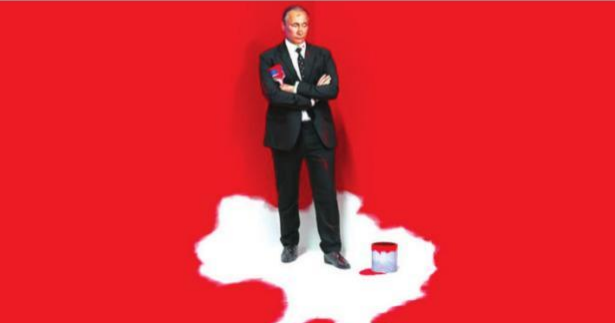Churchill said it best: “Dictators ride to and fro on Tigers, from which they dare not dismount.” That clearly seems to be the case with Vladimir Putin, de facto czar of whatever remains of the Russias. Faced with humiliating reversals in a war he seemed to think would be over in a week (it’s been more than seven months) and on which he has staked his increasingly tattered reputation, Putin saw no option but to double down.
So, the Kremlin announced a ‘partial mobilisation’ of up to 300,000 reservists which will presumably tip the scales in his favour. Before going into what actual difference this deployment will make, let’s examine why it was needed to begin with. The war started with almost everyone expecting the Russian army to walk all over Ukraine, and capture Kyiv fairly early, causing a wider collapse of the Ukrainian resistance.
However, the paratrooper operation intended to quickly seize the Hostomel airport failed, and while this was initially written off as a temporary setback, the approach of a 60-kilometre-long Russian military convoy was touted as the force before which the Ukrainians would be helpless. That convoy, slowed by mechanical breakdowns, lack of discipline and zero strategic guidance, never reached its target and ultimately dispersed.
The inability to establish air superiority meant that Russia could not use the brutal tactics it employed in Chechnya, and more recently in the Syrian cities of Aleppo and Idlib, which were effectively bombed into rubble to crush resistance. Putin then implied that his actual goal was never the conquest of Ukraine, and redeployed his forces in the Donetsk and Luhansk areas where he undoubtedly hoped for better luck, given that in 2014 his forces had seized this area and set up puppet regimes.
Meanwhile, Western arms and equipment flowed into Ukraine, and while the impact of these arms — especially the long-range High Mobility Artillery Rocket System provided by the US — was significant (the Turkish Bayraktars deserve a special mention) was immense, there is a significant lag between receiving weapons and being trained in their effective use.
That time was won by the undoubtedly dogged resistance put up by the Ukrainians, aided by the utter incompetence of the Russian military. On the one hand, the Ukrainians — who had developed a strong sense of nationhood in the decades following the collapse of the Soviet Union — were fighting to defend their homes and lands, while on the other, the bulk of the Russian army was not even aware it was about to go to war. In the initial weeks and months, it was easy to discard reports of Russian indiscipline, equipment malfunctions and general inefficiency as ‘Western propaganda’, but now it is clear that most of those reports were accurate.
More damningly, reports about murder, torture and rape committed by Russian troops are increasingly being verified and served to stiffen Ukrainian resistance. Stalemated Russian troops then fell prey to a counteroffensive that will undoubtedly be studied by military strategists for decades to come: through strategic deception,
Ukraine made Russia believe that its counteroffensive would focus on retaking Kherson, a logical target of any such operation, which made Russia redeploy its stretched troops in that region.
But the actual counteroffensive was aimed at the logistic hub of Kupyansk and was so successful that Ukraine recaptured almost as much territory in a few days as Russia had conquered since the onset of war. And so, despite Putin himself promising there would be no wider mobilisation, hundreds of thousands of Russians are being drafted into service, a move that has sparked scattered protests across Russia.
This is significant as the protesters are fully aware of the consequences of defying the Kremlin but are making their anger heard nonetheless. Will the new soldiers tip the balance? Given that most of these are highly reluctant warriors who will receive only basic training for a few weeks, it is doubtful that they will have the morale and unit cohesion to rise against the motivated and wellarmed Ukrainians.
Already, we are seeing videos of drunk and despairing recruits abusing the military commissars, along with images of men in their 50s being pressed into service. Indeed, if reports are to be believed, the new soldiers are being equipped with obsolete steel helmets and armed with rifles that were antiquated in World War II. The Russian mercenary outfit, Wagner, has even been seen recruiting in high-security prisons, promising murderers and rapists a pardon if they serve in Ukraine for six months.
Having staked so much on this war, Putin cannot back off. It is ironic that a man who so successfully built an image of being a master strategist, and was successful in amplifying divisions in the West through asymmetrical information warfare, has, in fact, ended up revitalising Nato and united the West… against himself.












